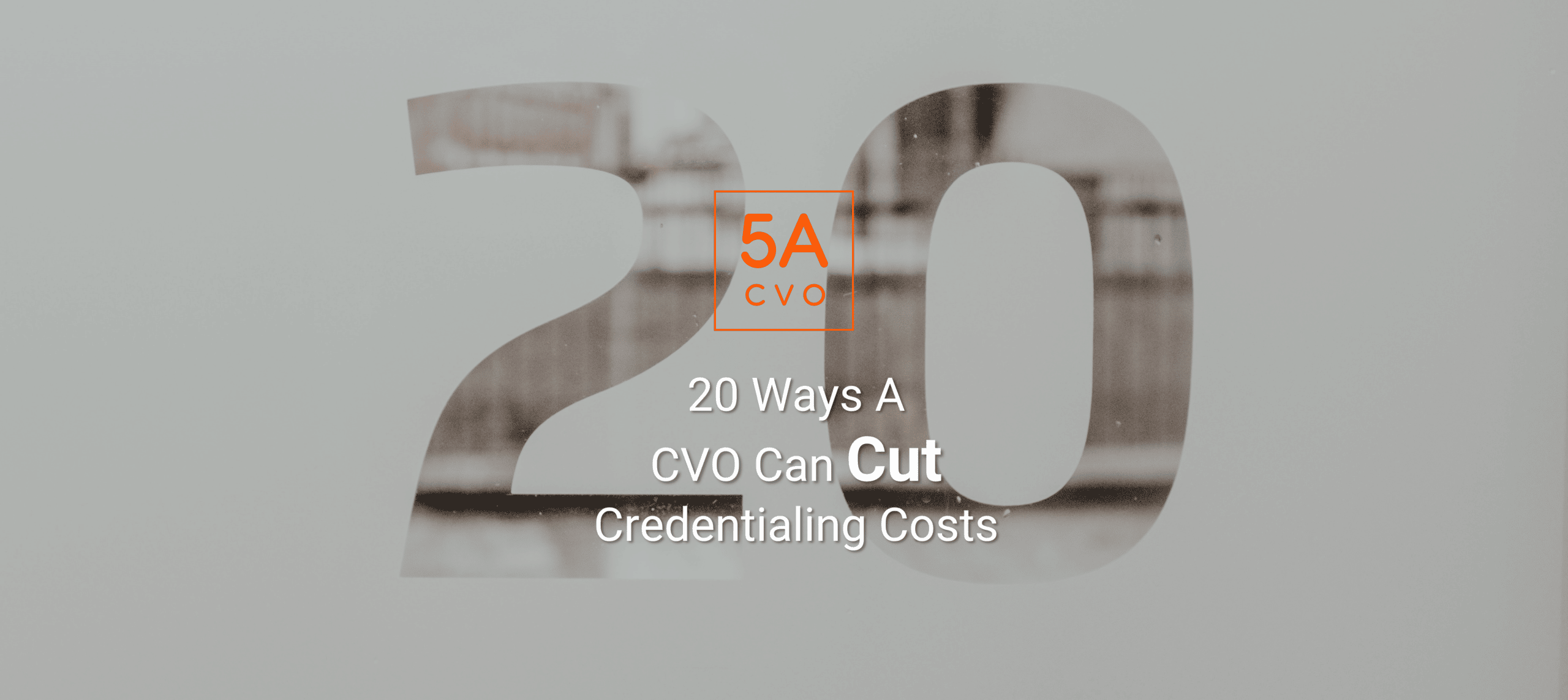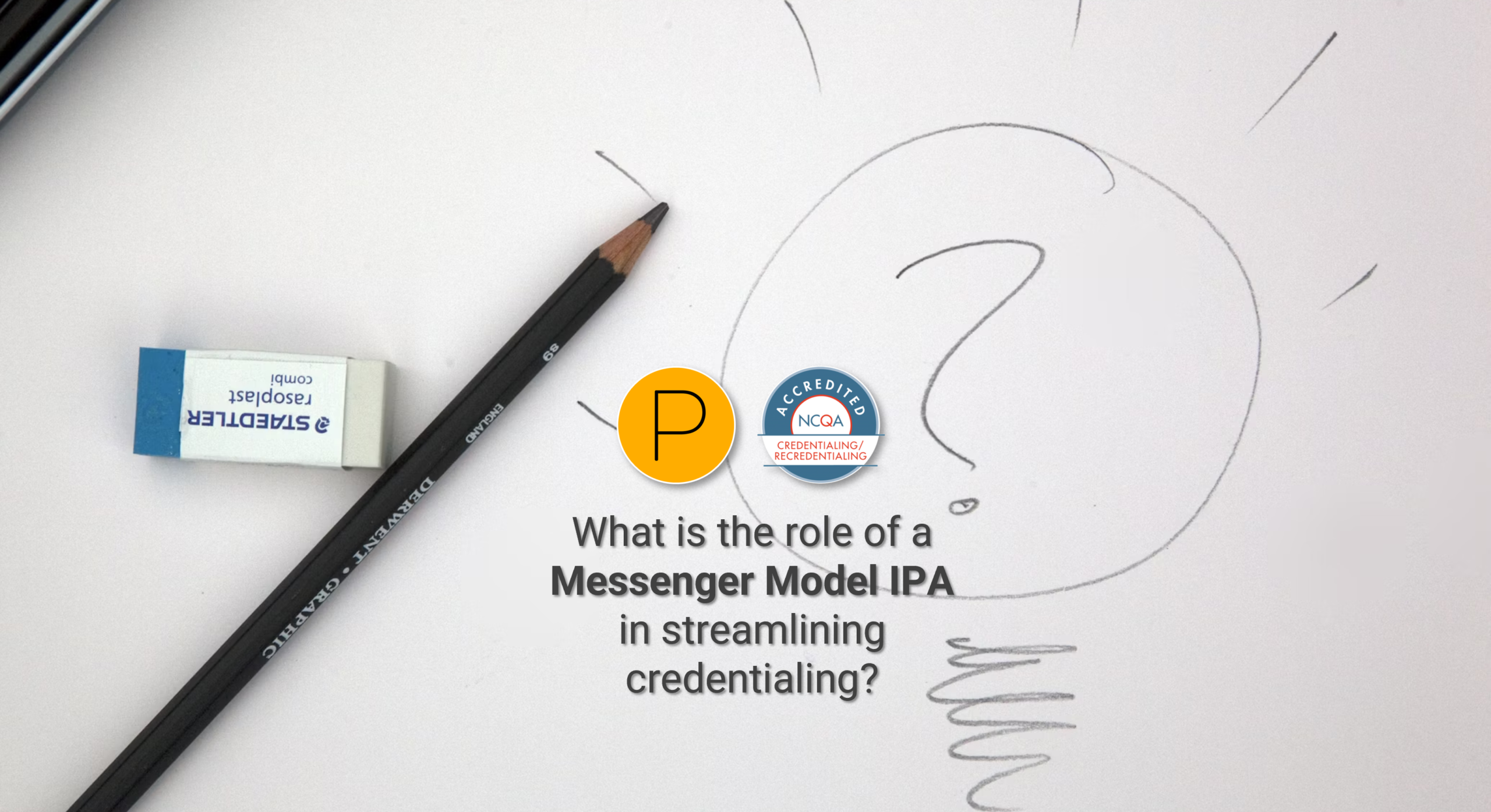Smarter Credentialing through a CVO Reduces Your Workload down to 6 simple steps from 52 conventional credentialing steps.
Medical offices that perform their own primary source verification credentialing must perform more work. It takes time and staff members to see the credentialing process to its end. Even if on-site staff members complete every step flawlessly, they are still doing, at minimum, around 52 conventional credentialing steps to produce a complete file ready for presenting to the committee for approval – work that you could outsource to a CVO (credentials verification organization) like 5ACVO.
The medical credentialing process traditionally involves at least fifty-two highly detailed tasks that should be performed carefully. A poorly credentialed healthcare provider can increase exposure to an office to medical malpractice claims, which might negatively impact the office’s bottom line.
Some of the 52 traditional credentialing steps include:
- Sending, tracking, and receiving the provider application packet. The packet’s length can correspond to the area of specialization and can total between 3 and 300 pages.
- Getting the provider’s release and privilege forms.
- Reviewing the disclosure’s questions and answers as well as explanations of any employment gaps and claims history.
- Obtaining applicable certificate copies of Board, ECFMG, Medical School, Internship, Residency, Fellowship, and two years CME.
- Getting copies of government-issued photo ID, Malpractice, DEA, and CDS.
- Acquiring CPR, ACLS, and PALS certificate copies and TB, MMR, varicella, and flu vaccination records.
- Attesting any conflicts of interest.
- Ordering a criminal background check.
- Getting an Allied Health Professional’s Supervising Physician’s Statement.
- Verifying board certification, medical school internship, residency, fellowship, affiliations, and state medical licensure.
- Obtaining professional peer references.
- Acquiring a copy of the provider’s current certificate of insurance.
- Run a National Practitioner Data Bank query.
Credentialing never ends. Verify. File. Repeat.
When a provider needs to be credentialed again, almost the entire process must be repeated. Hiring a CVO to perform medical credentialing could free medical office staff from those tasks so they can focus on improving the organization in other ways, including generating more revenue or reassigning staff to other areas.
Fifty-two conventional credentialing steps comprise the traditional medical credentialing process. Smarter credentialing via outsourcing the entire process to a CVO like 5ACVO can reduce those steps to 6. Smarter credentialing can mean less work for medical office staff members to verify their provider’s qualifications to practice medicine.
Less work can also mean less staff is needed for those offices that desperately need to cut costs. A credentialing specialist’s average base salary is $51,000 per year. A seasoned specialist will demand a higher wage, possibly over $100,000 annually.
Less staff means fewer payroll taxes, less insurance coverage, and other benefits. A CVO can potentially save medical offices an additional $21,000 per employee on top of salary expenses.
Outsource your Medical Credentialing
Medical credentialing is the process of verifying a healthcare provider’s professional documentation, which includes all the provider’s certifications and qualifications. Some medical offices perform the intricate undertaking in-office, using their own staff members. The healthcare employee assigned to the credentialing may not have the necessary training to complete the process. Any lack of knowledge about medical credentialing can result in errors that delay onboarding new providers. Delays will also push back any revenue the office can receive once they start billing. Medical offices can lose revenue which is critical, especially today.
A medical office can instead outsource its credentialing tasks to a CVO team for a lower monthly fee. This can lighten not only their expenses but also their workload. Sometimes a medical team’s morale can improve if they are not faced with many assignments. Stress levels may also see a decline. The team may perform better if they are not overworked. They might not make as many mistakes during their workday. Billing and even treatment mistakes could cost a medical office money they almost certainly cannot afford. With more time, energy, and focus on addressing these areas instead of credentialing, there is good potential for an overall improved environment.
A practice that saves money by outsourcing medical credentialing can instead invest in better equipment, hire more providers, and open more facilities. These benefits can potentially reduce patient wait times and raise their overall satisfaction. The three benefits mentioned above on the medical office side can make staff members’ jobs easier when they have better support and more revenue.
Worrying about money can weigh on a medical office and affect work performance. Outsourcing medical credentialing can be a solution that reduces a medical office’s workload. A medical office employing a CVO can reduce the verification process to 6 credentialing steps, which is much less work than performing the job in-house.
More information about 5ACVO
5ACVO is a NCQA Credentialing Accredited specializing in credentialing and primary source verification and is part of the Fifth Avenue Healthcare Services family. 5ACVO sister companies include Fifth Avenue Agency (MPLI and medical malpractice insurance specialists) and Primoris Credentialing Network (credentialing and provider enrollment specialists with 54+ health plan and network provider enrollment options).
5ACVO originally published this article here. For more information on 5ACVO, please visit 5ACVO.com or Contact Us.












